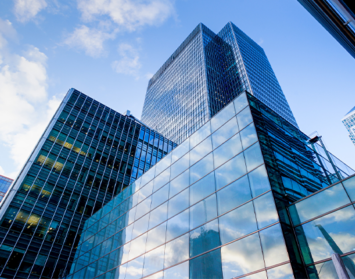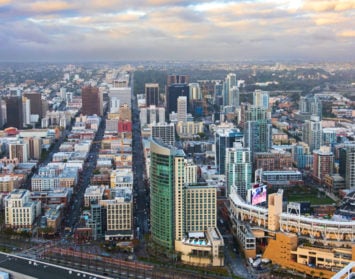No boom, but recovery hints at job boosts, Marino tells business group
By Roger Showley
Rising commercial real estate deals point not yet to a boom but at least to a recovering San Diego economy this year — with more jobs, higher lease rates and, ultimately, new major construction, local business executives learned Tuesday.
David Marino, principal at the Hughes Marino commercial brokerage, said 2012 looks brighter than 2011.
“As we saw healing and the mild, early stages of recovery in 2011, I think that means 2012 will be an even better year,” Marino told the monthly meeting of the local chapter of the Association for Corporate Growth.
“Companies don’t sign for bigger or more space unless they have confidence that revenues are there to back it up, capital markets are there to support growth and that they will actually need people or products to put into that space.”
He said local and national companies have leased more space office and industrial space in the last two years and eaten into a 50-million-square-foot overhang.
There’s still some 46 million square feet of vacant space — a long way from the relatively low 26 million square feet available at the peak of early-2000s business boom. But Marino said the trends signal good, though perhaps not great times ahead.
“There’s a lot of scar tissue in the business community,” he said. “People are hesitant to make commitments. Even given that, companies did go out and lease 2 million square feet of more space in the county for individual lab and office space combined. That tells us something exciting is going on in the job market and the San Diego business community from a recovery standpoint.”
Of course, real estate people are famously optimistic, even in the worst of times, but Marino says to pay no attention to the past as we project into the future.
“It means companies not only created jobs but are preparing to create more jobs,” he said of the messages he’s getting from Hughes Marino’s 240 clients and contacts. “They’re building up infrastructure. Larger facilities or expansion allows them to hire in that space in the next year.”
He said the strongest demand is coming from medical devices and other health-care services, digital media software and Internet-related concerns. The defense contractor sector has grown rapidly but is likely to flatten this year.
The demand for new space has generally occurred in suburban markets, but Marino thinks it will now extend to downtown, which suffered a net loss of leased space in 2011, according to CoStar Group.
“Downtown is one of those funny markets,” he said. “When the suburbs get cheap, people move out, and as suburbs get more expensive, people move back. I think downtown is going to stabilize and over time do better.”
He said downtown has one advantages other areas lack — access to state enterprise zone tax credits that can yield more than $100,000 a year to companies, based on job growth. That figure can more than offset the higher parking costs in Centre City.
As for new construction, Marino said several build-to-suit leases will yield several major new buildings in the next two years.
“I think in 2013 you will see some of the big boys go out and take a risk,” he said.
Several large users need to locate their employees in one building or on floors of 20,000 square feet or more in the best and most well located buildings. Those opportunities are rather rare.
“You’ll start seeing supply shortages,” he said.
But the construction of major high-rise speculative office buildings may be a decade off.
“A new construction high-rise needs $4 rents,” he said, meaning the monthly lease per square foot. “Rents today are half of that to 65 percent of that. It’s going to take some years before we start seeing speculative high rises.”
He noted that San Diego skyscraper booms tend to come in waves– the mid-1980s, the early 2000s. “We have decade-plus cycles of no high-rise construction.”
Also speaking at the event, Brian Nugent of Torch Hill Investment Partners focused on San Diego’s defense sector, including drones and small satellites, as attractors to investors.
Chris Coldoff of the Gensler architectural firm looked at trends in office space design that feature few private offices and large collaborative work spaces.
While many companies encourage working outside the office, he said, they see the main office as a place for team work and facilitate that by building attractive eating, meeting and entertainment spaces.
“It’s a place for people to come together,” he said “If workers are all working independently, they still need to find ways they can collaborate. Very few people can operate effectively individually. They need time to come together.”
David Marino is senior executive vice president of Hughes Marino, a global corporate real estate advisory firm that specializes in representing tenants and buyers. Contact David at 1-844-662-6635 or david@hughesmarino.com to learn more.









